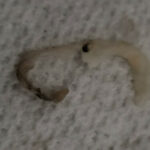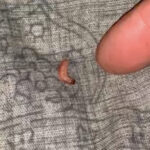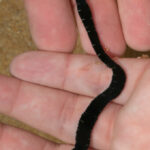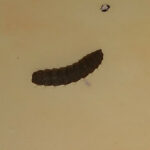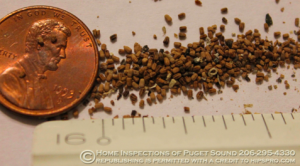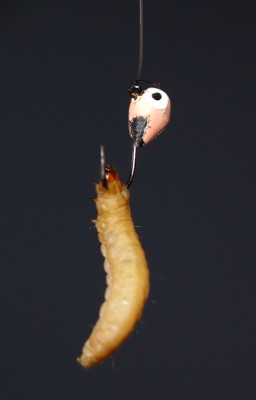
Today, we will address a question from a reader in Germany. She raises waxworms to use as bait when trout fishing. She’s having no problem keeping them alive. The issue is that the wax worms start to spin silk for cocoons before she has a chance to go fishing! Once the worms start their journey to moth, they’re no longer useful as trout bait. She wonders if we can give her some advice as to how to persuade these little guys not to continue on to their next life stage.
For those who may not know, waxworms are not worms at all. Like many of the animals we write about, they are the larval stage of an insect. The wax worms she’s referring to are the larval stage of the greater wax moth (Galleria mellonella).


Galleria mellonella have a typical moth lifecycle, moving from egg to larva to cocoon to adult moth. To survive all these little guys need is food, a safe place to live, and for the temperature to be warm enough. Because they’re so easy to raise, wax worms are commonly bred as feeders for fish and insects or, as in the case of our reader, fishing bait.

So, basically, our reader is asking us how to keep her wax worms from moving from their (metaphorical) childhood to adolescence, while keeping them alive. The good news is that this is relatively easy to do. Like many other insects, wax worms will only spin cocoons when they are certain that they will survive long enough to emerge as adults. So, they need to have stored enough calories to get through the transformation, and the temperature must be warm enough for them to survive. If they are denied either of those things, then they will not spin cocoons. If the depravation is excessive, then they’ll fail to grow plump and will make unattractive bait. Or, they’ll just die.
The trick, then, is to keep them happy and healthy enough so that they’ll survive, but not so comfortable that they’ll spin cocoons. So, our reader will want to keep her waxworms well-fed and warm enough to survive, but not so warm that they think it’s a good idea to start spinning. So, she wants to keep them in a refrigerator, or other cool space, where the temperature is greater than 40°F (~4°C) but less than 55°F (~13°C). That should keep them healthy enough to survive, but not so comfortable as to thrive.
All About Worms is always free, always reader-supported. Your tips via CashApp, Venmo, or Paypal are appreciated! Receipts will come from ISIPP Publishing.
You might also find these guys interesting!





